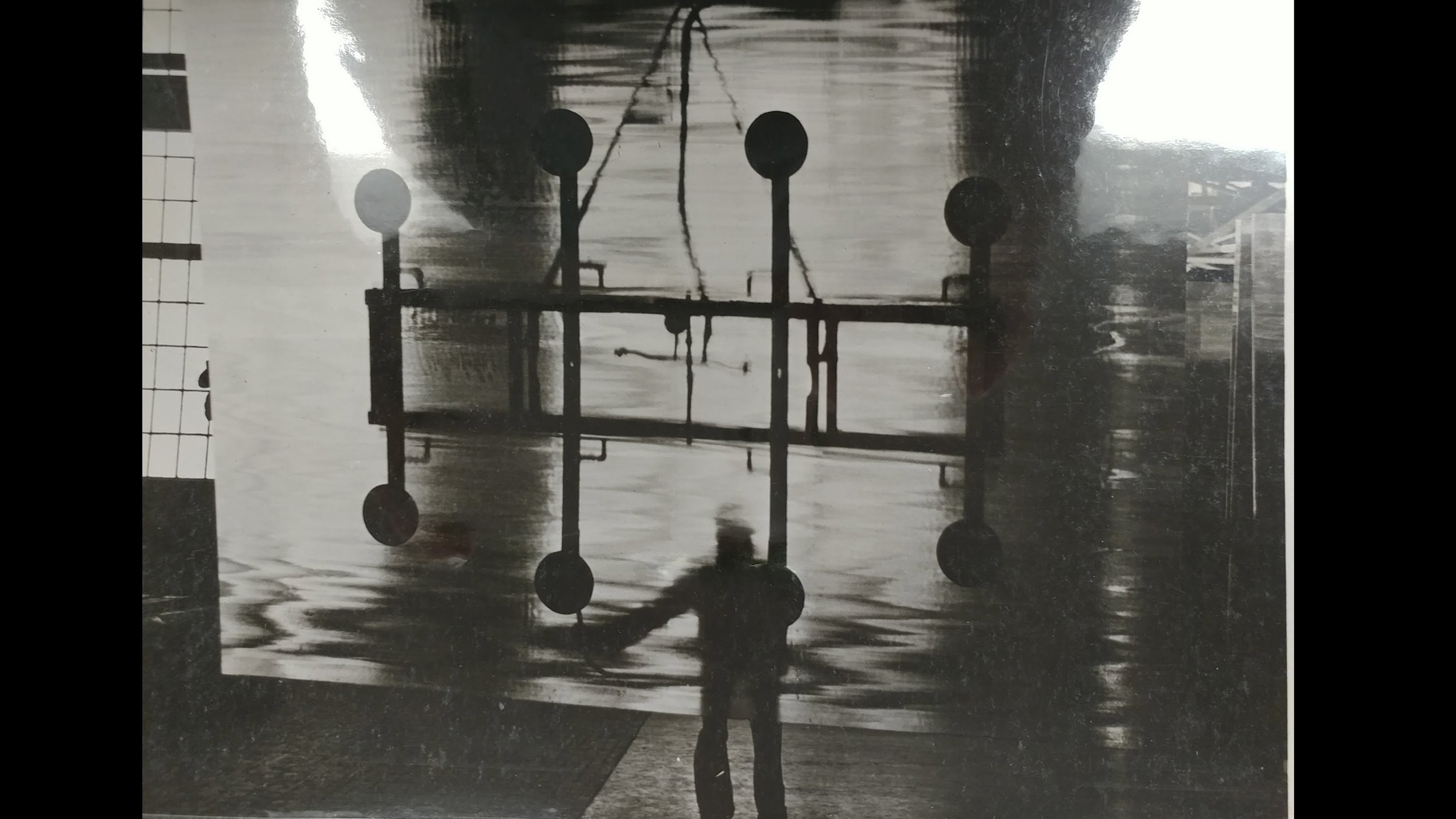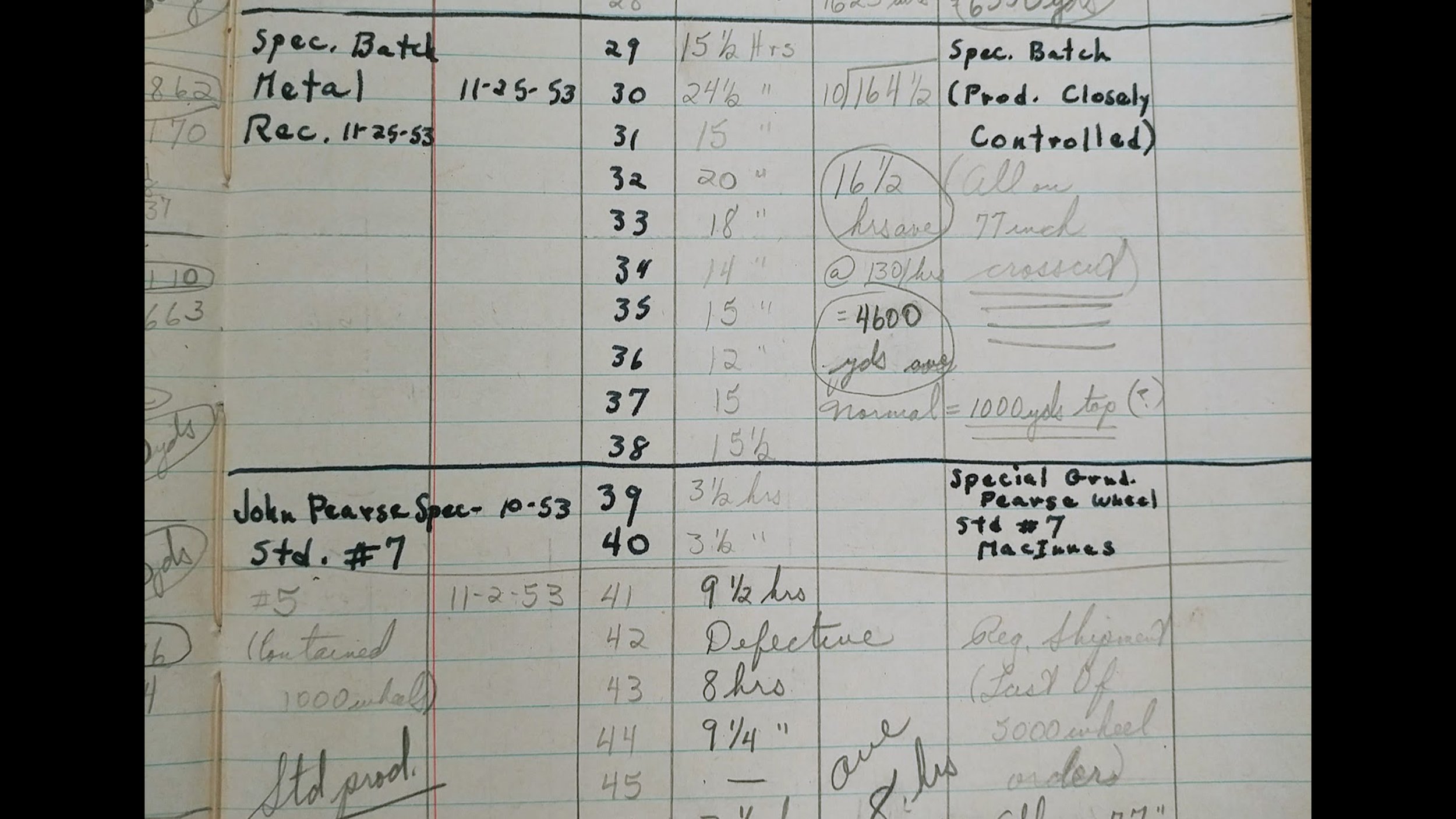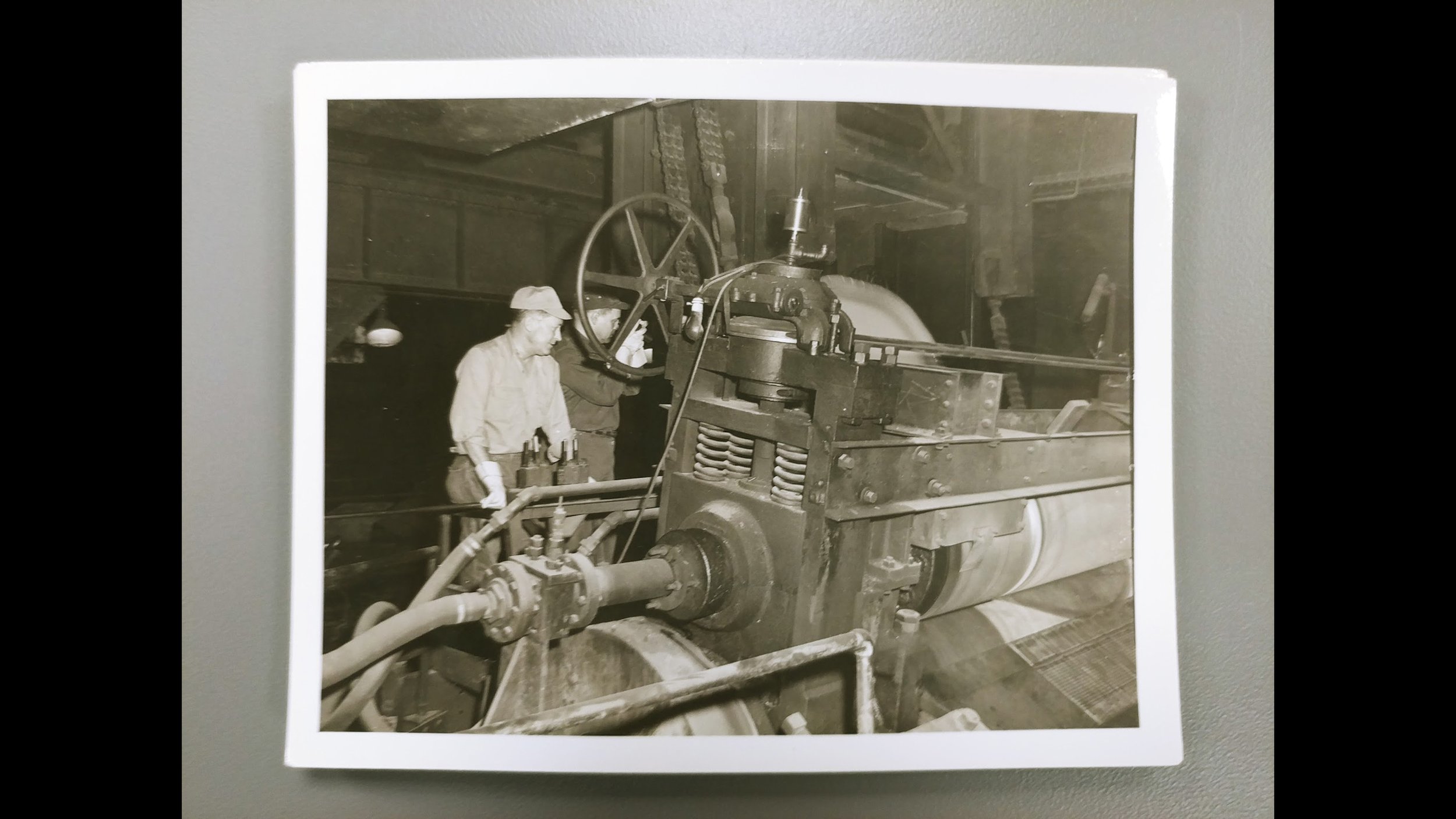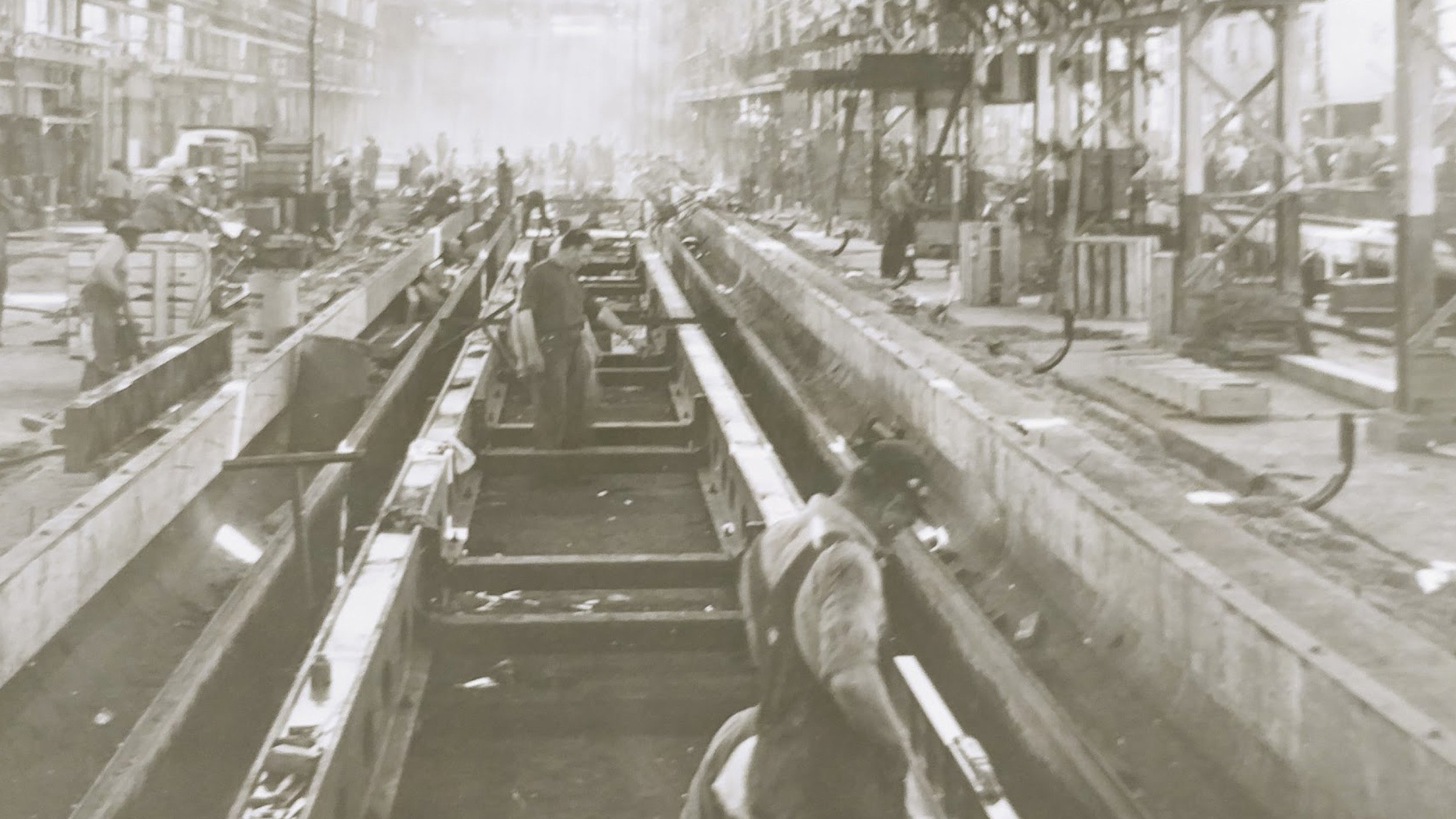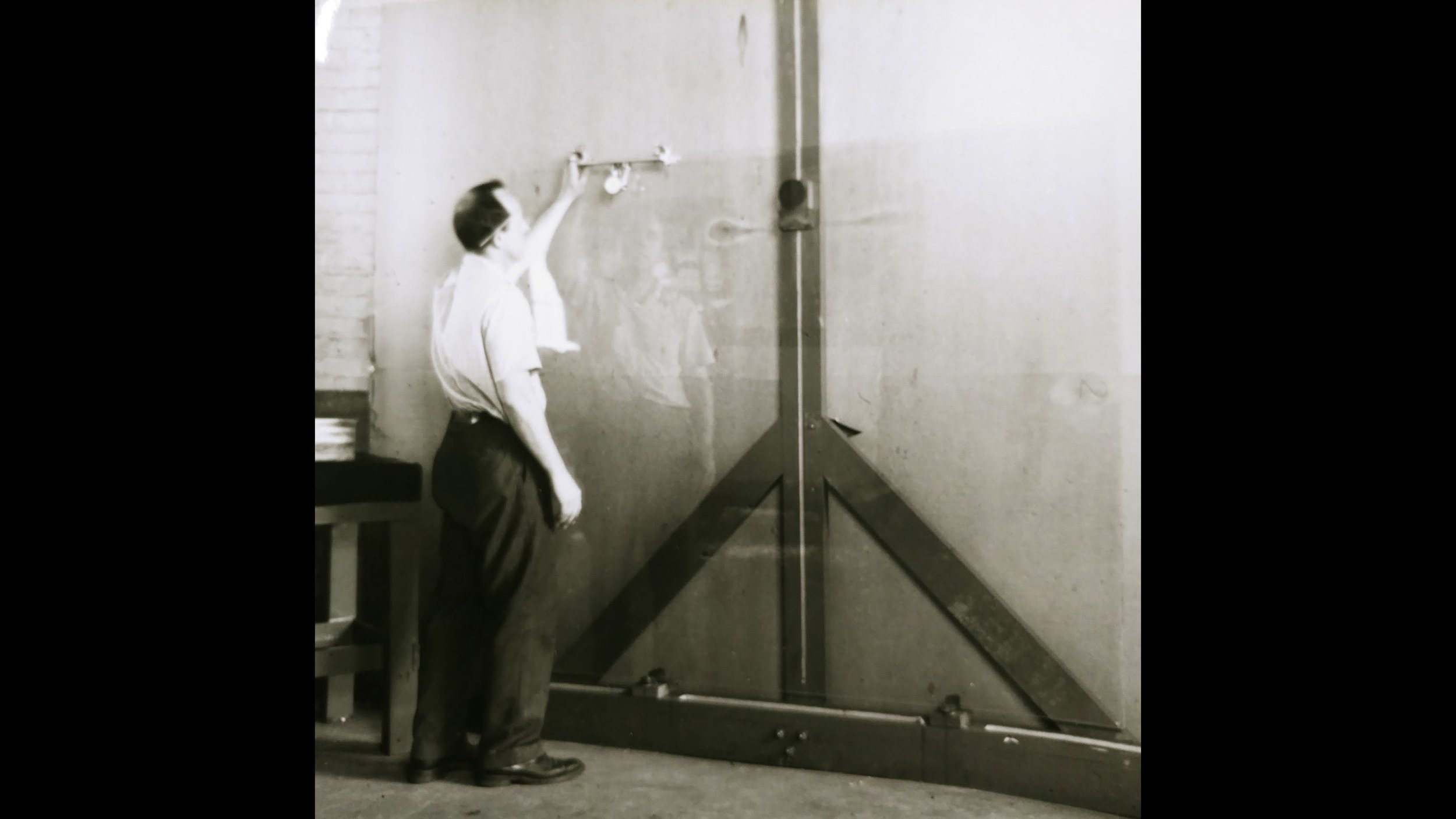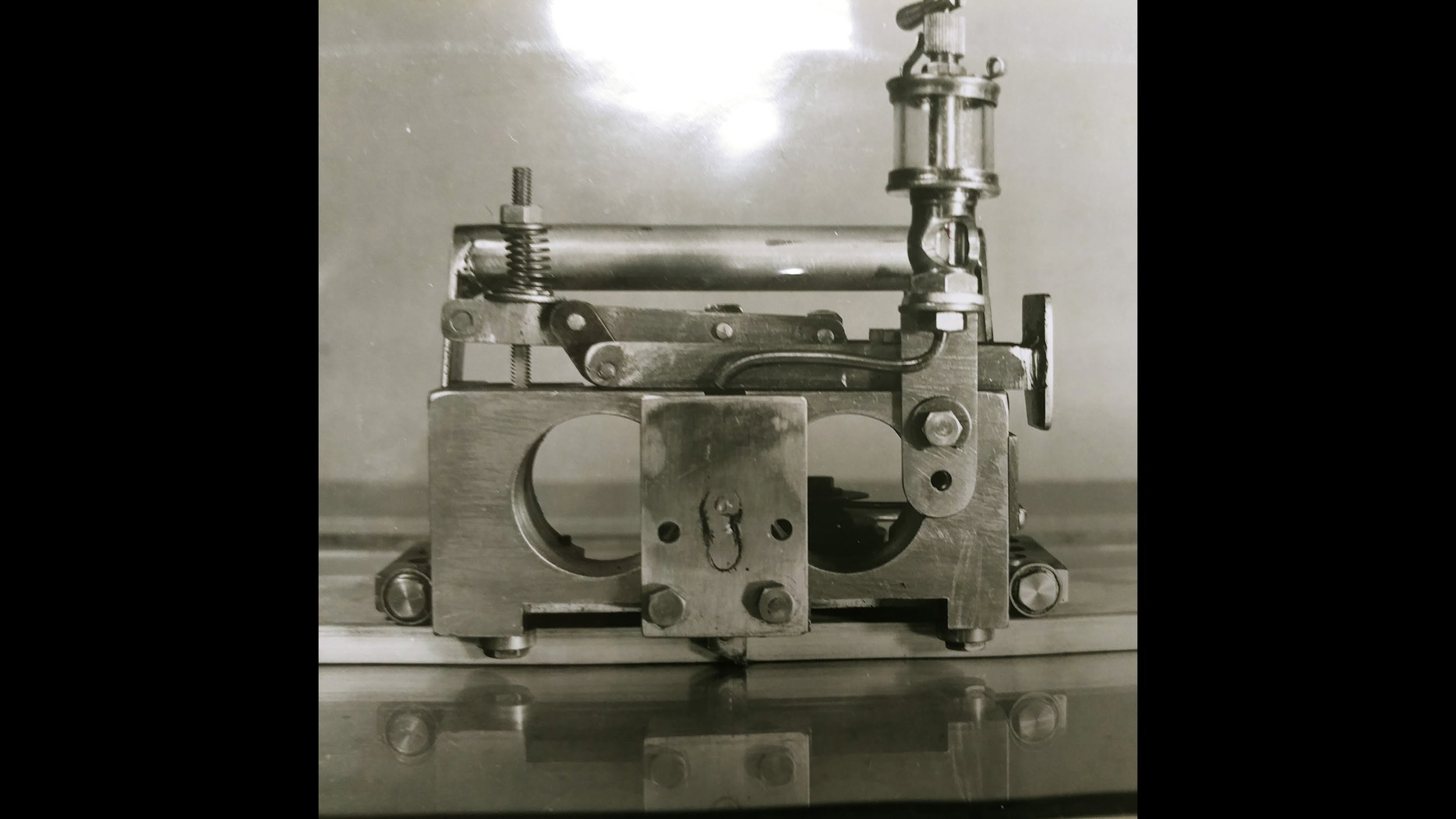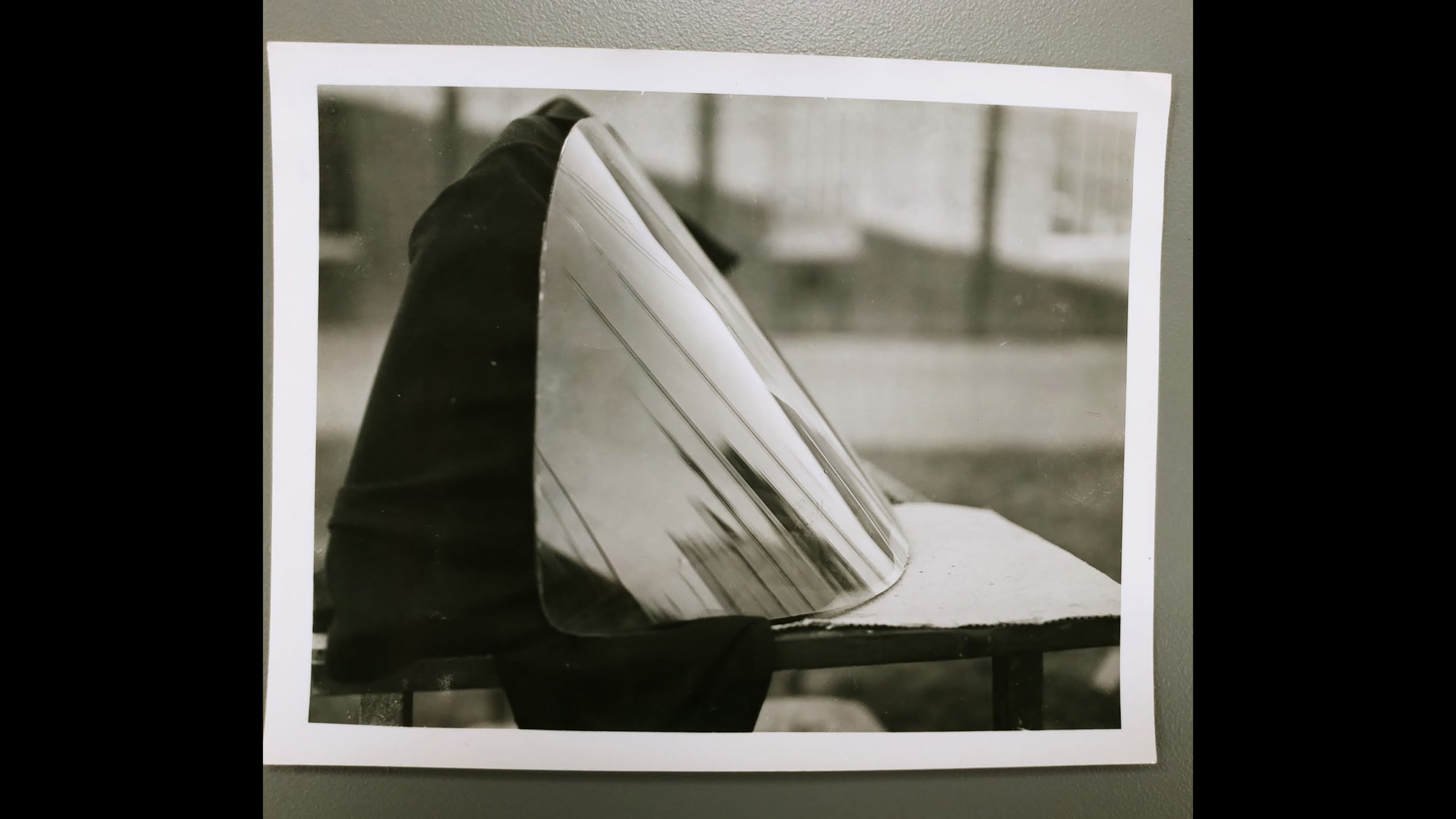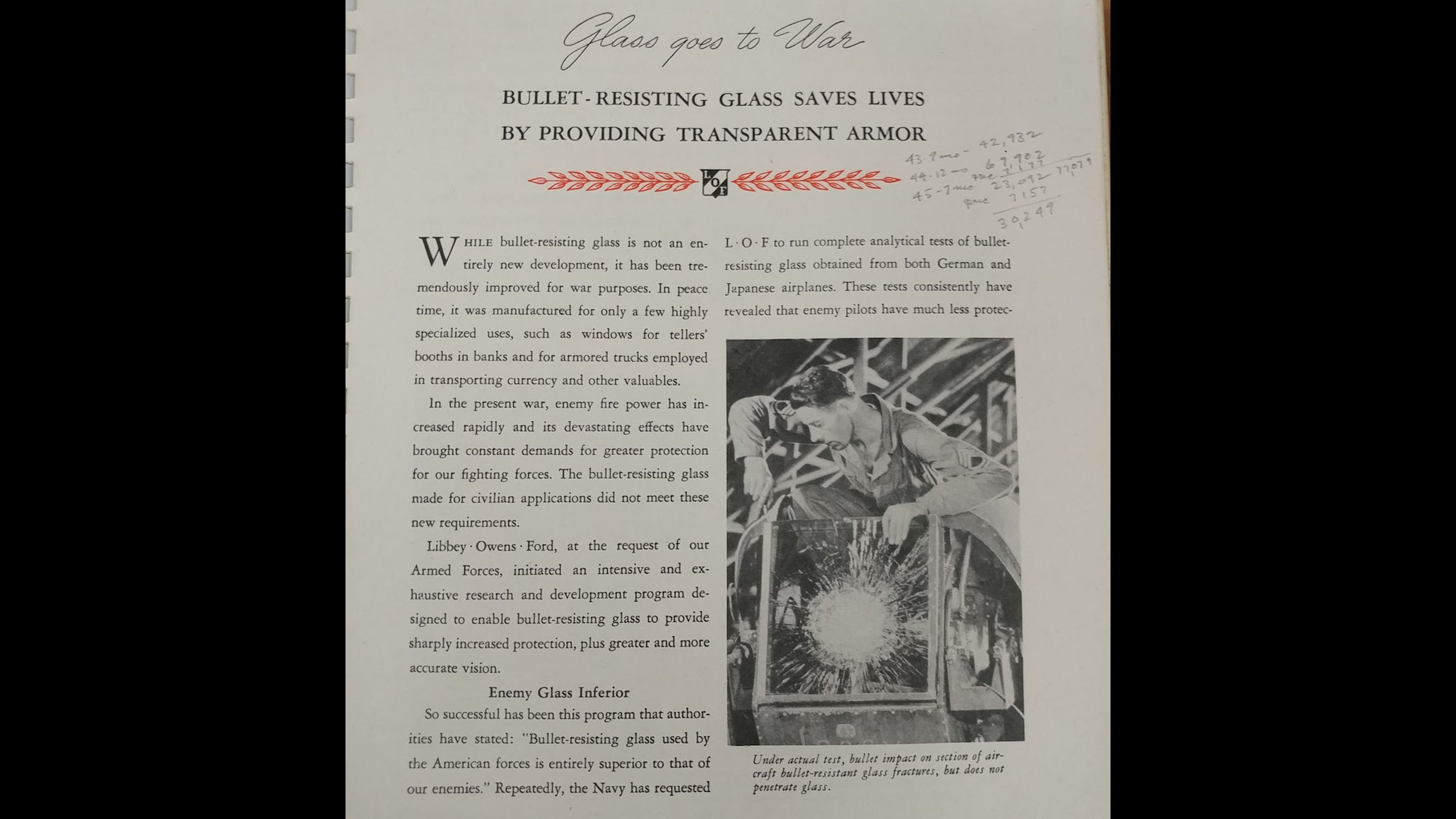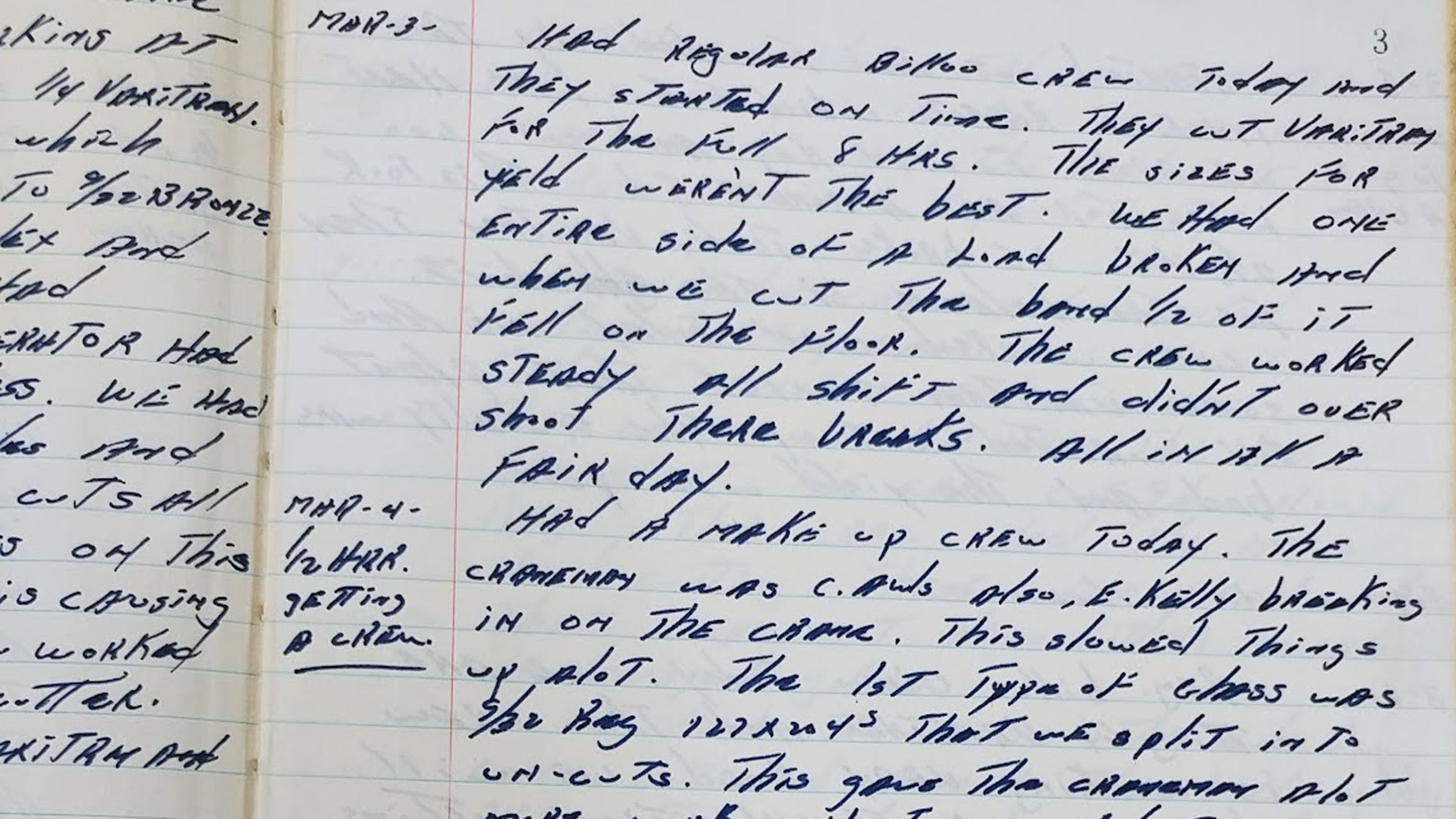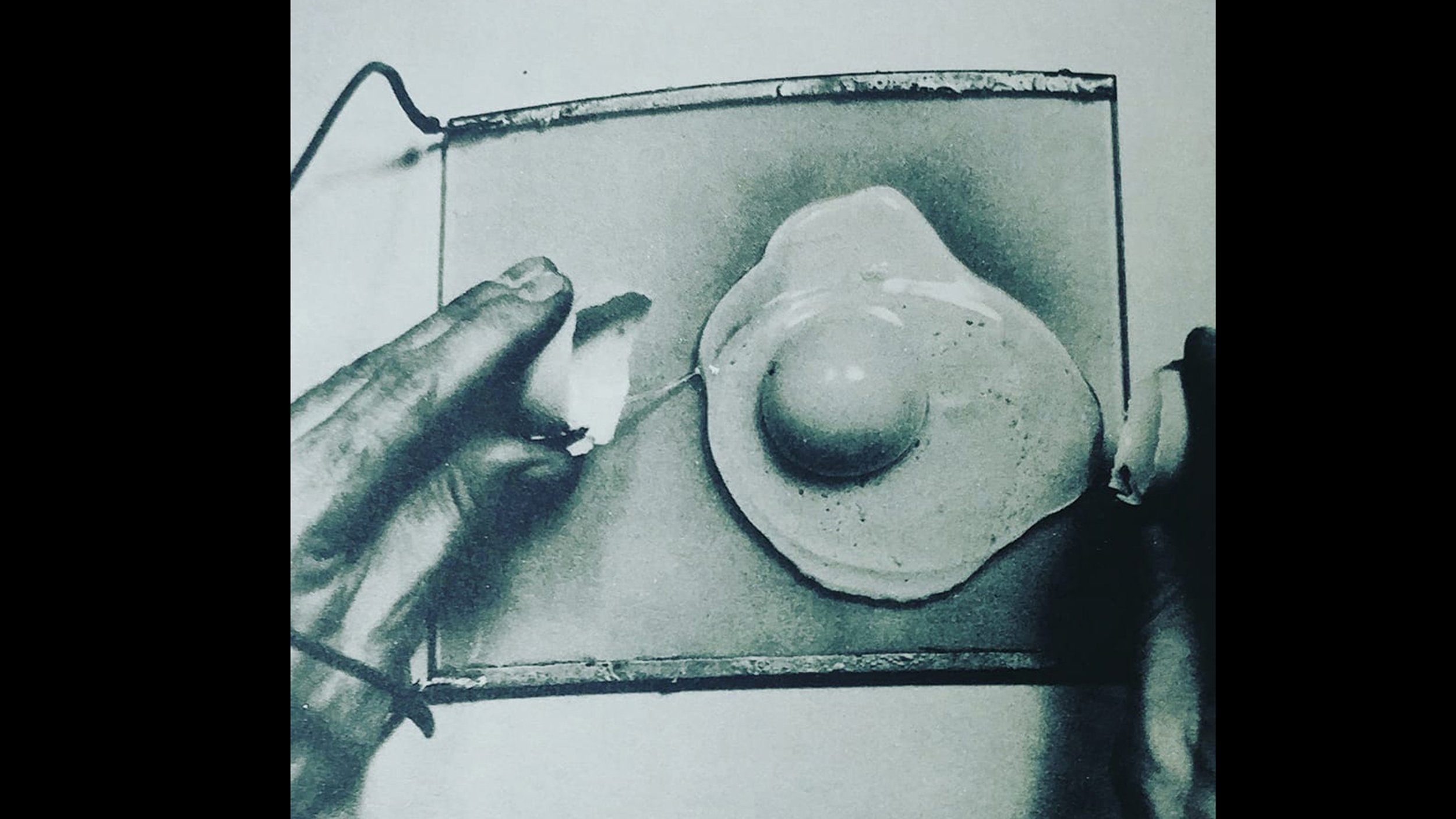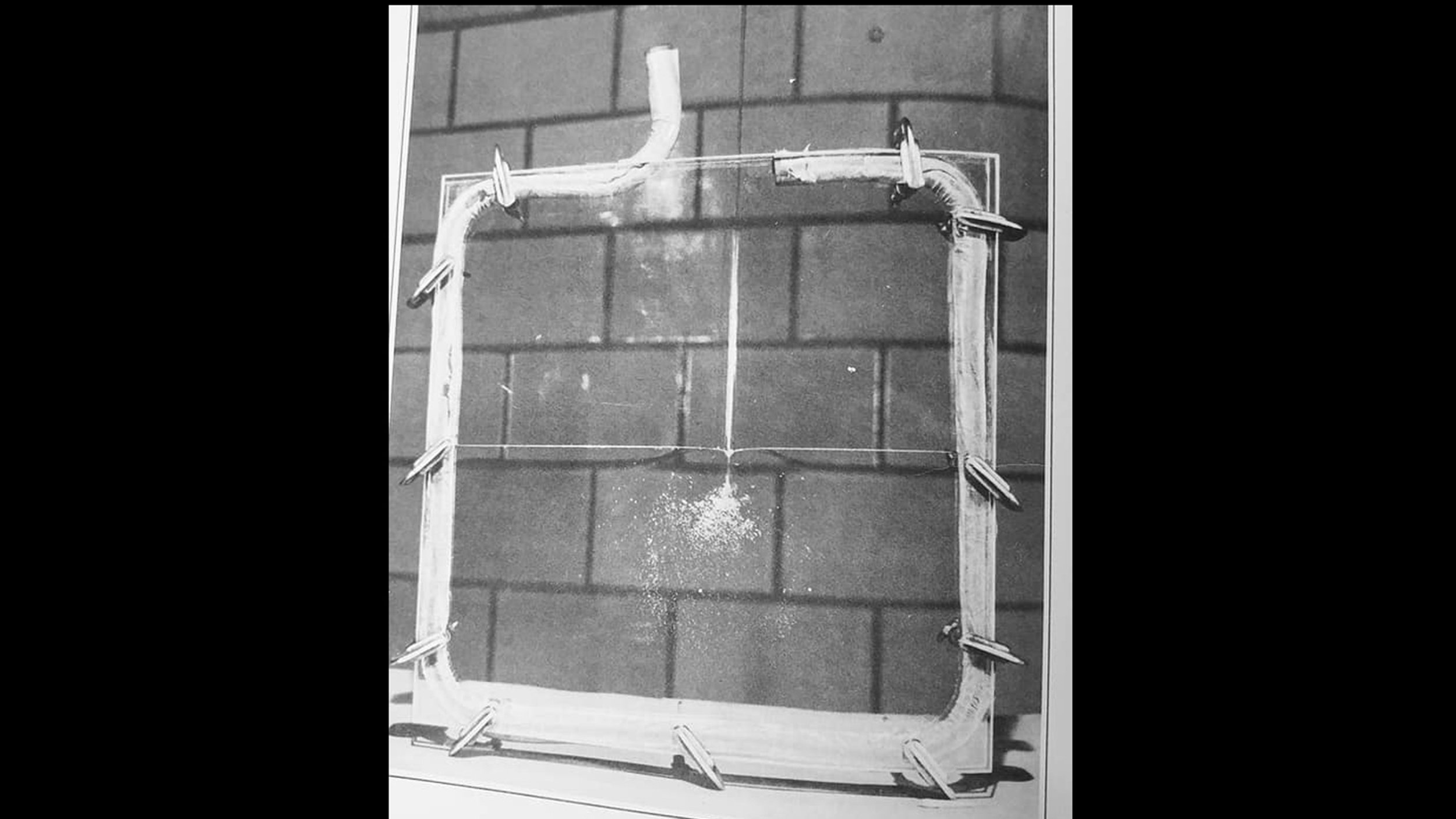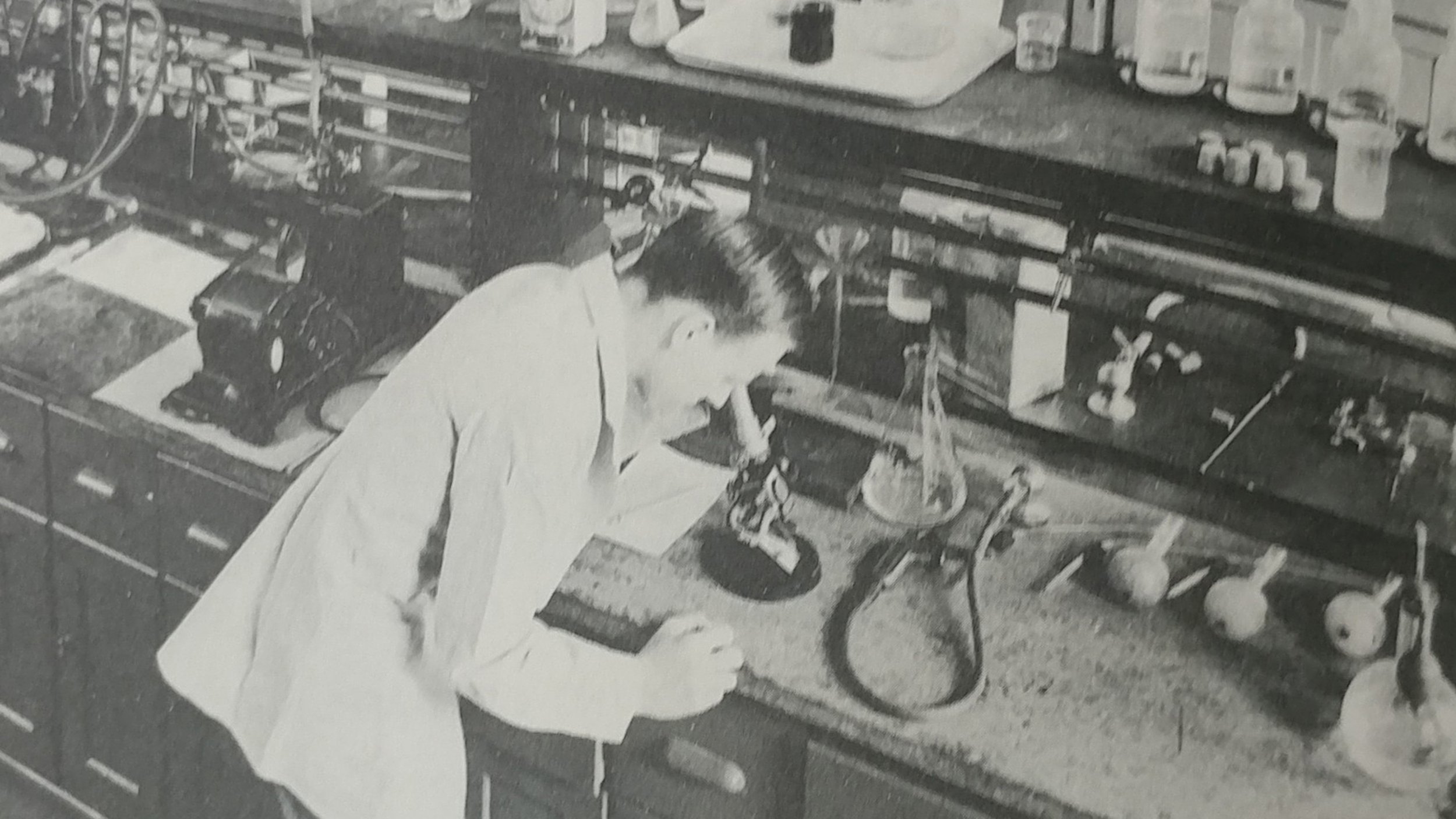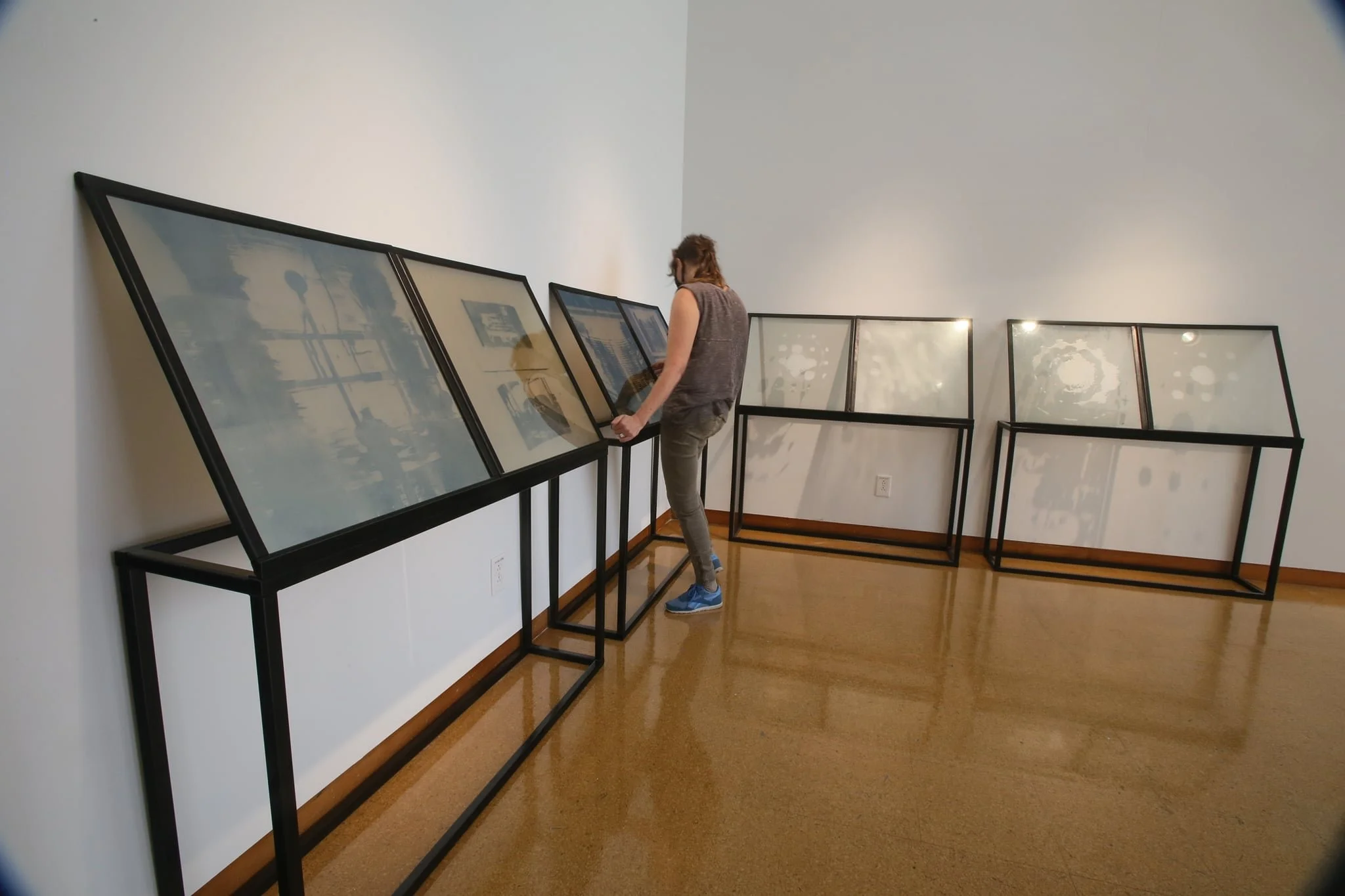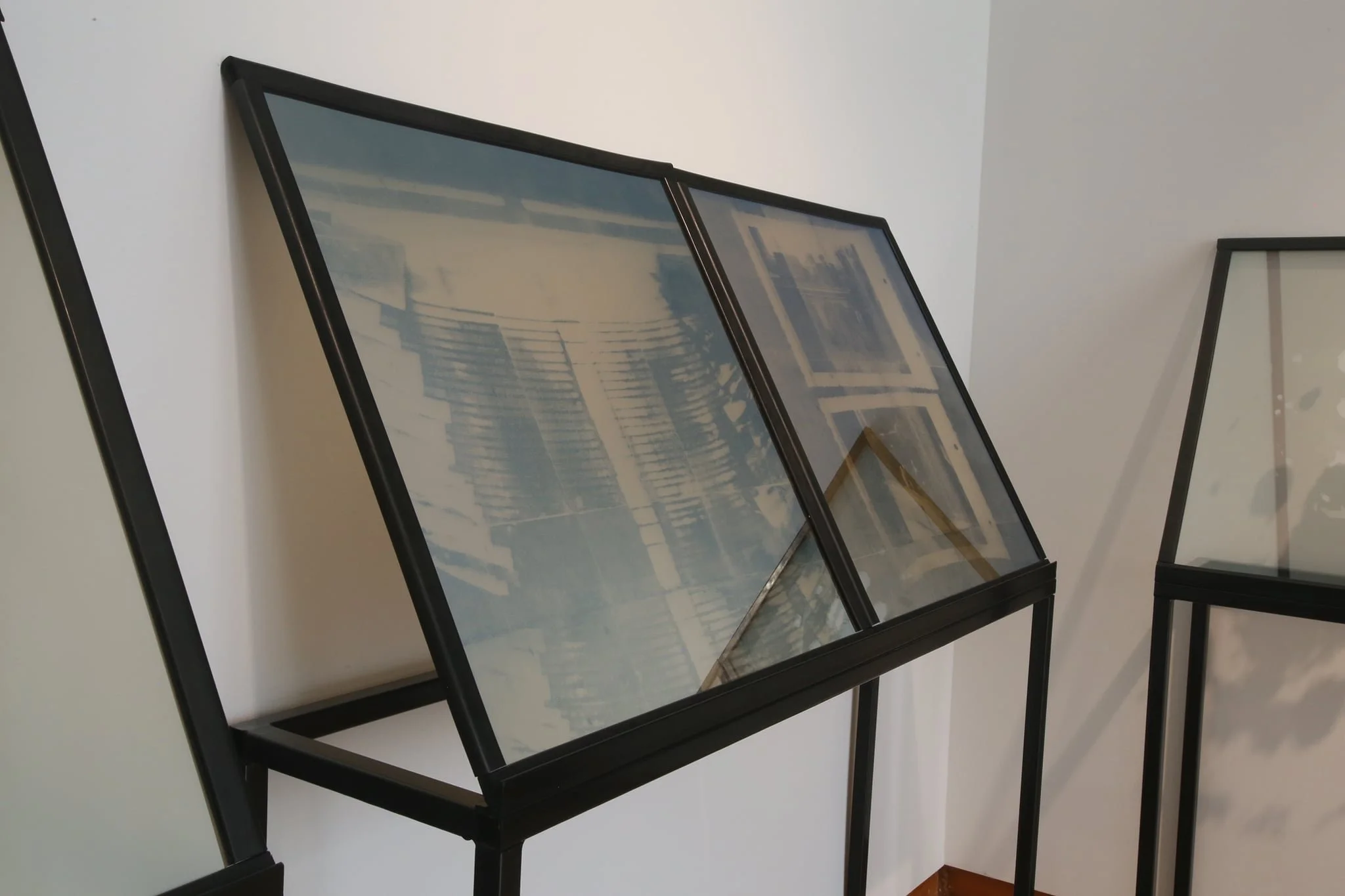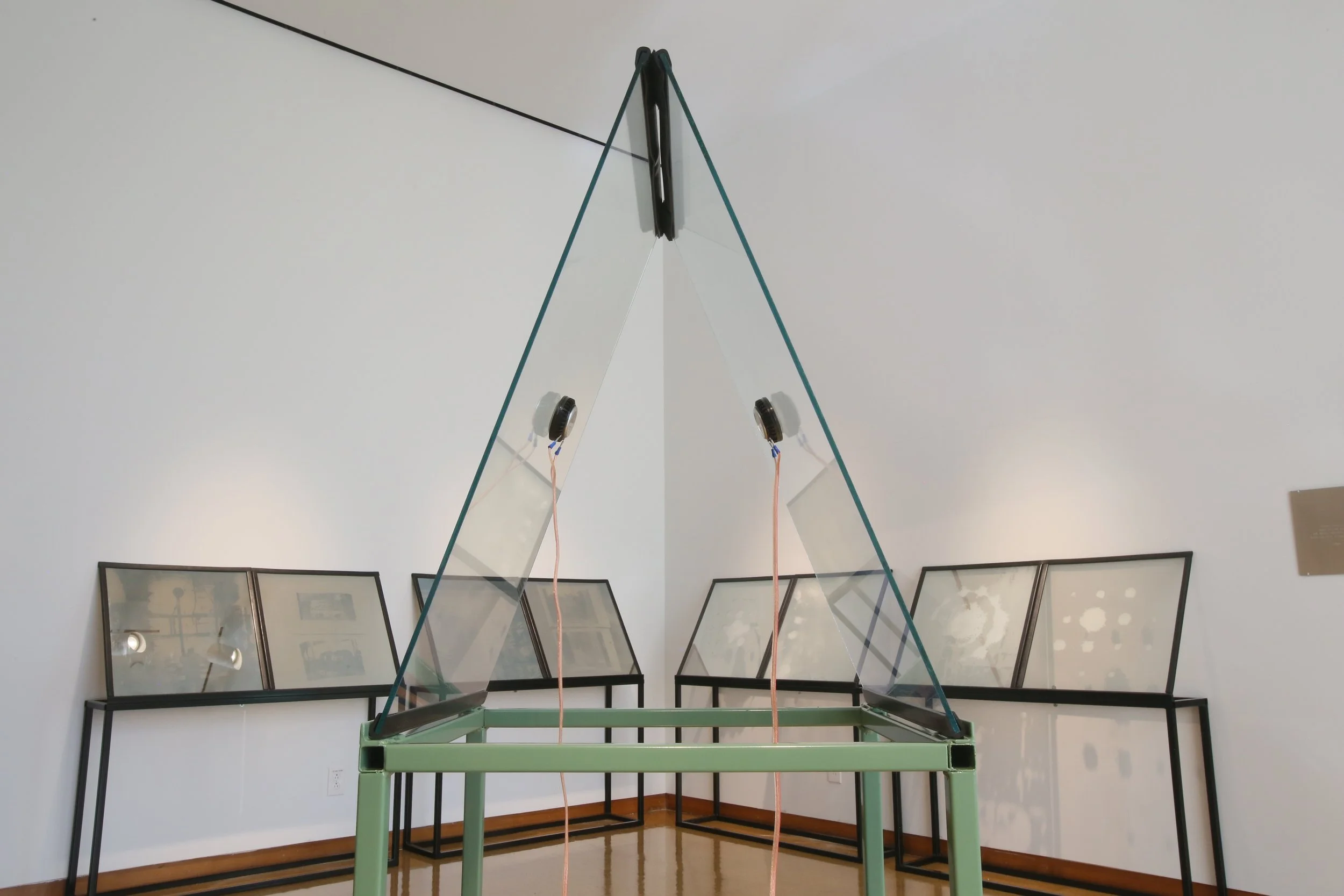resonance
Momentum | Intersection
Toledo Museum of Art, Toledo OH
September 3 - October 4, 2021
This project was developed over the course of 2020 & 2021 as part of the Momentum/Intersection Fellowship program, a collaboration between The Toledo Museum of Art, NSG Pilkington Glass, and The Arts Commission of Greater Toledo. Additional support was provided by the Foundation for Contemporary Arts, New York, NY.
My grandfather Joseph D. Ryan worked for Libby Owens Ford in their Glass Research and Development Department from the 1930s-1960s, starting as a glass chemist and eventually becoming head of R&D. Researching his experiments, I became particularly intrigued by the wide range of tests he conducted for the US military in WWII, as well as the freewheeling experimental culture of the laboratory. “Resonance” draws from that atmosphere, pulling from images, notes, and sounds from the era to create a meditation on the process of investigative research. The structures of the installation are inspired by both his patent drawings and testing armatures from the laboratory.
Original proposal
As a substrate, glass both absorbs and transmits light and sound. Using it as an image-making material inevitably evokes relics from early photography (glass plates) as well as its pragmatic history of preserving perishables within a vessel or container. The reflectivity of float glass adds another dynamic layer of interaction, acting as a mirror to its surroundings and shifting visually in relation to the viewer’s movement.
Researching how Pilkington’s products are used, I became particularly intrigued with the concept of spandrel glass, a glass whose primary function is to conceal internal infrastructure and mechanics. The various components of this project envision ways that glass that initially appears opaque can shift or react in interaction with the viewer, slowly revealing hidden imagery or structural elements as the viewer draws closer through visual and auditory resonances.
INSTALLATION DETAILS
Detail of “Resonance” panels, photo by Lia Conklin
Detail of “Resonance” panels, photo by Lia Conklin
Detail, engraved mirror and video. Mirror text reads: “Continually, day after day, LOF tried to find the source of this trouble, but it was like looking for a needle in a haystack, seeking a ghost that could not be seen.”
Detail of “Resonance” speakers, photo by Lia Conklin
Glass speakers
The glass speakers played a two-channel audio piece using excerpts of historical texts, sound, and original writing.
Sample excerpts
“In the present war enemy firepower has increased rapidly and its devastating effects have brought constant demands for greater protection for our fighting forces. The bullet resisting glass made for civilian applications did not meet these new requirements.
Libby Owens Ford at the request of our armed forces initiated an intensive and exhaustive research and development program designed to enable bullet resisting glass to provide sharply increased protection, plus greater and more accurate views.
So successful has been this program that authorities have stated “bullet resisting glass used by the American forces is entirely superior to that of our enemies.”
_
“My uncle Keith died in a car crash in 1956 at the age of 21. My grandparents never talked about his death but I felt it in their house, a stillness and an amorphous sadness sinking into everything. Given that, I always found it particularly poignant that my granddad’s specialty as a glass chemist was laminated windshields... One of the more startling and heart-wrenching discoveries I found researching his work archive was a compendium of car crashes. I don’t know that he organized the study, but flipping through page after page of photos felt like the macabre fascination of someone working through the mechanics of grief.”
_
Sound mixing and reading by Jeremy Scidmore
Listen to recording (57:56 minutes):
historical images
In March of 2020 (just before the start of COVID-19) I traveled to Toledo and gathered imagery from the Pilkington and Libbey Owens Ford archives. This is a selection of that imagery which inspired the sensibilities of the installation.
